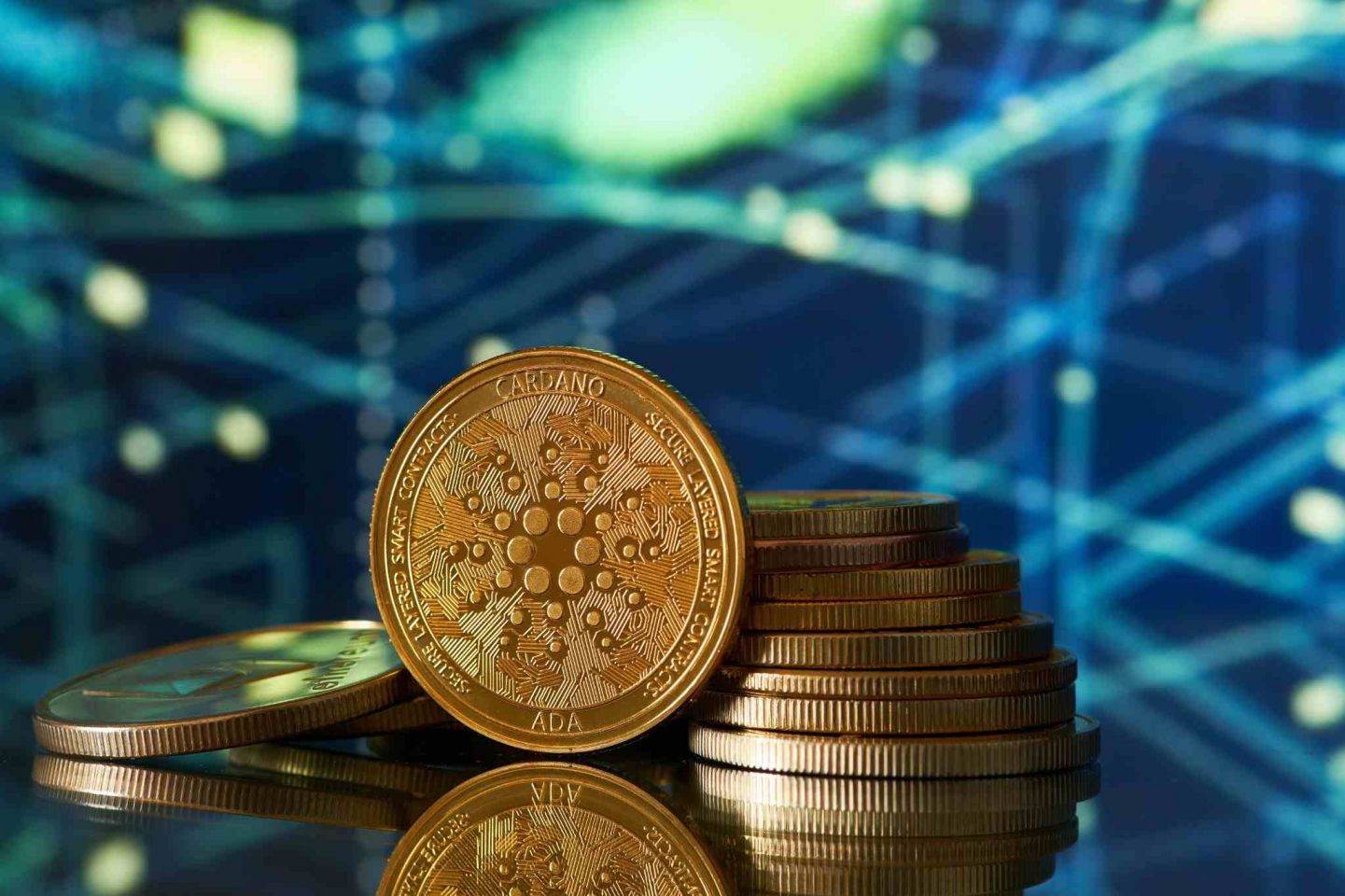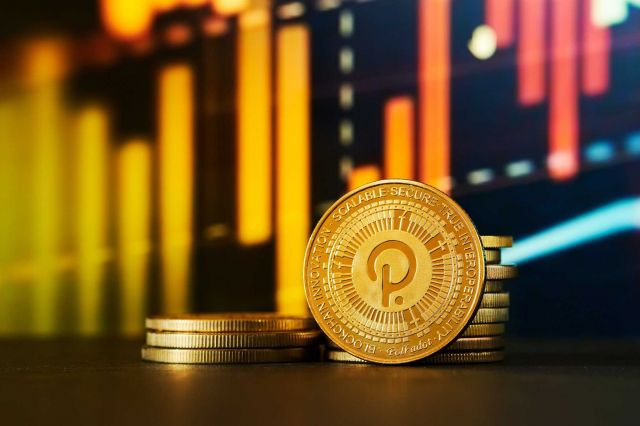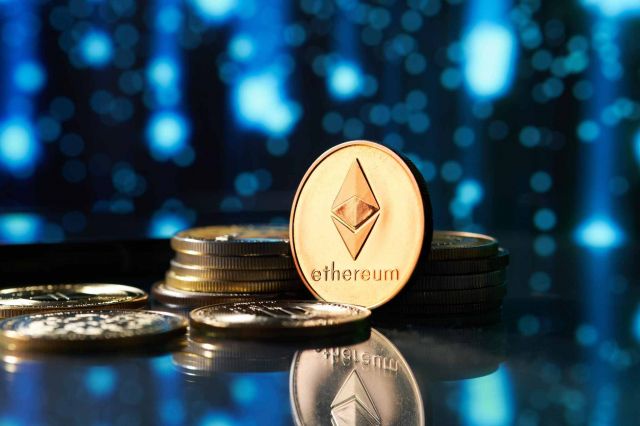What is Cardano? A trader’s guide

Boost your knowledge about Cardano and the ADA price history, including how to trade ADA/BTC via CFDs on Capital.com
What is Cardano?
Named after 16th-century polymath Gerolamo Cardano, Cardano is a ‘third-generation’, open-source decentralised blockchain that launched its mainnet in 2017. It was founded by Charles Hoskinson, one of the co-founders of Ethereum, and emphasises a scientific, peer-reviewed approach to development.
The platform is built on formal methods and peer-reviewed academic research with the goal of achieving best-in-class performance, immutability and security. Cardano aims to create a more balanced and sustainable ecosystem, evolving to meet the needs of its users and integrating with other systems.
Cardano allows users to send and receive transactions, build and deploy smart contracts, dApps (decentralised applications), cryptocurrencies, and Layer 2 networks on its underlying blockchain. Transactions, along with other fees on Layer 2 networks are paid in Cardano’s native cryptocurrency – cardano (ADA) – named after 19th-century mathematician Ada Lovelace.
ADA is a utility token used to pay for services and transaction fees. Node operators can stake ADA to become validators, also known as stake pool operators, who approve transactions and record them on the blockchain. In return, they earn a share of the network fees.
As of October 2024, ADA consistently ranks among the top 12 largest cryptocurrencies by market capitalisation.
What is a third-generation blockchain?
A third-generation blockchain builds on the features of earlier generations, offering improved scalability, security, upgradeability, and functionality.
Unlike first-generation blockchains like bitcoin, which focus solely on decentralised cryptocurrency transactions, and second-generation blockchains like Ethereum, which introduced smart contracts and dApps, third-generation blockchains such as Cardano aim to solve the limitations of previous versions. They do everything first and second-generation blockchains can, but with enhanced performance and more sustainable ecosystems.
How does Cardano work?
Cardano operates on a blockchain network that records transactions in a decentralised ledger. It uses the Ouroboros Proof-of-Stake (PoS) consensus mechanism, which was the first PoS protocol based on peer-reviewed research and mathematically proven to be secure.
In Ouroboros, time is divided into epochs and slots. Slots are brief intervals during which a block can be created, and epochs are collections of slots. Slot leaders are randomly selected to create new blocks and validate transactions. Validators, known as stake pool operators, stake their ADA tokens to participate in this process. By staking ADA, validators help secure the network and earn rewards proportional to their stake.
Cardano's token supply is capped at 45 billion ADA, which creates scarcity and could potentially influence the ADA price over time.
Additionally, Cardano has a deflationary mechanism tied to its NFT minting process. When an NFT is created, a small amount of ADA is required for the transaction, effectively reducing the circulating supply while the NFT exists.
What’s the cardano (ADA) price history?
Cardano’s native cryptocurrency – ADA – has experienced significant price fluctuations since its mainnet launch in 2017. Its September 2015 initial coin offering (ICO) ran for 16 months, ending in January 2017 and raising a total of $62.2 million. ADA began trading publicly upon its mainnet launch in September 2017, quickly gaining popularity among cryptocurrency enthusiasts.
Past performance does not guarantee future results.
ADA reached its first major peak in early 2018, landing it in the top 10 cryptocurrencies by market capitalisation. However, like many other cryptocurrencies, the ADA price trended downward during the Crypto Winter of 2018-2019.
In July 2020, the rollout of the Shelley upgrade introduced staking and enhanced decentralisation, boosting market confidence and adoption. The combination of this, growing DeFi interest and anticipation for the Alonzo upgrade, which added smart contract capabilities, – helped ADA hit an all-time high in September 2021.
Throughout 2022 and into 2023, ADA's price faced volatility amid broader market conditions, including economic uncertainty, regulatory developments, and fluctuations in the cryptocurrency market. Despite these challenges, Cardano continued developing its ecosystem, focusing on scalability solutions like Hydra and smart contract improvements.
In 2024, ADA saw upward momentum driven by a broader crypto market recovery, increased institutional interest in proof-of-stake blockchains, and advancements in Cardano’s Hydra upgrade. However, a market correction later in the year led to a price decline in the final months.
Which factors might influence the cardano (ADA) live price?
Several factors can influence the live price of cardano (ADA), including crypto market trends, network upgrades, adoption and ecosystem growth, market sentiment and speculation, and more. Here are the key factors in more detail.
Cryptocurrency market trends – ADA price movements often correlate with the broader cryptocurrency market, particularly bitcoin (BTC) price movements. Market-wide bullish or bearish trends can impact the ADA price regardless of Cardano-specific news.
Technological developments and network upgrades – major upgrades to the Cardano network, such as the Shelley and Alonzo hard forks, could impact the ADA price. Updates that improve functionality, scalability and security may cause anticipation and attract more users and investors. Conversely, failed implementations that fall below expectations might cause the price to decrease.
Adoption and ecosystem growth – increased adoption of Cardano for dApps, DeFi projects and smart contracts can boost demand for ADA. Partnerships with governments, institutions and businesses can influence trader sentiment and drive price movements. However, poorly chosen partnerships could result in negative reputation by association, potentially contributing to price decreases.
Market sentiment and media coverage – positive media coverage, endorsements from influential figures and active community engagement could contribute to price increases. Conversely, negative news like security concerns or development delays could influence the ADA price to decrease.
Competition from other blockchains – the emergence and growth of competing platforms like Ethereum, Solana and Polkadot can potentially shift ADA. If competitors offer superior technology or attract more developers and users, it may reduce demand for ADA. Meanwhile, negative news or sentiment about any of Cardano’s top competitors could influence the ADA price to rise.
What are the cardano (ADA) trading hours?
Cardano (ADA) operates on a decentralised blockchain network that is active 24 hours a day, seven days a week, 365 days a year. This means you can trade ADA at any time, including weekends and holidays.
- Cryptocurrency exchanges – many exchanges facilitate 24/7 trading, allowing for continuous market participation.
- Online trading platforms – some reliable and trusted brokerages provide cardano (ADA) trading via CFDs.
If you choose to trade CFDs, you can follow the ADA performance live in US dollars with our comprehensive ADA/USD price chart.
Alternatively, you can check out our ADA/BTC price chart.
Monitoring the cryptocurrency’s activity can help you to keep an eye out for any key fundamental or technical events that may affect short-term movements in its value.
How to keep and store cardano (ADA)
After purchasing ADA, you can store it in a cryptocurrency wallet. Options include:
- Software wallets – specialist desktop or mobile wallets like Daedalus (full node wallet) and Yoroi (light wallet) allow you to store, send, receive, and stake ADA.
- Hardware wallets – physical devices like Ledger Nano S/X and Trezor provide secure offline storage, protecting your ADA from online threats.
It's important to ensure your wallet is secure and to keep your private keys safe.
Alternatively, if you trade on the ADA/USD price or ADA/BTC price via CFDs, you don’t have to worry about storing or securing the underlying asset.
How to trade cardano (ADA)
Cardano (ADA) is a cryptocurrency, meaning that it can be traded directly on a cryptocurrency exchange or peer-to-peer. Traders may also choose to trade ADA via a derivative, a financial product that takes (or ‘derives’) its value from the price of the underlying asset.
You could use a contract for difference, or CFD, to trade on the ADA/BTC price. A CFD is a contract, typically between a broker and a trader, where one party agrees to pay the other the difference in the value of a security between the opening and closing of the trade.
You can use CFDs to trade on whether you think ADA/BTC will rise (called ‘going long’) or fall (‘going short’). CFDs give you access to leverage (also known as margin trading), allowing larger positions with a relatively small outlay. This amplifies your potential profits, but also your potential losses, making CFD trading risky.
You can learn more about trading cryptocurrencies with Capital.com in our comprehensive guide to cryptocurrency trading.
Aside from CFDs, you can also trade ADA through instruments like futures, options, ETFs, and mutual funds. Each offers an alternative to the leveraged trading of CFDs, suiting different risk profiles and investment strategies.
FAQs
What is Cardano?
Cardano is a decentralised, open-source blockchain platform founded by Charles Hoskinson and launched in 2017. It aims to provide a scalable, secure, and sustainable platform for developing smart contracts and decentralised applications (dApps). Using the Ouroboros Proof-of-Stake consensus mechanism, Cardano emphasises a scientific, peer-reviewed approach to development. Its native cryptocurrency, ADA, is used to pay for transactions and services on the network.
How does Cardano work?
Cardano operates on a blockchain that uses the Ouroboros Proof-of-Stake consensus algorithm where validators – known as stake pool operators – stake their ADA tokens to participate in the network's consensus process. Time is divided into epochs and slots, and validators are randomly selected to create new blocks and validate transactions. This process ensures the security and decentralisation of the network, and it’s energy-efficient relative to Proof-of-Work systems.
Is Cardano better than Ethereum?
Whether Cardano is ‘better’ than Ethereum depends on various factors and specific use cases. Both platforms aim to provide robust infrastructures for smart contracts and dApps. Cardano adopts a scientific, peer-reviewed approach and uses a Proof-of-Stake consensus mechanism, which is more energy-efficient. Ethereum, with its larger developer community and earlier adoption, offers a more mature ecosystem that successfully overcame scalability issues with ‘The Merge’ upgrade in 2022, proving its ability to adapt and evolve.
Who owns the most Cardano?
The identities of the largest cardano (ADA) holders aren’t publicly disclosed due to the pseudonymous nature of blockchain addresses. Large amounts of ADA are held by the Cardano Foundation, Emurgo, and Input Output Global (IOG), the entities responsible for developing and promoting Cardano. Cryptocurrency exchanges hold significant amounts of ADA on behalf of users.
As of October 2024, no single individual or organisation is known to own a controlling share of ADA, maintaining the decentralised nature of the network.
Visit our other complete guides

How to trade Polkadot
